#thai mythology
Text
THE SIGN – CULTURAL REFERENCES, MYTHOLOGY AND META

This post comes on the heels of the one by @respectthepetty about mythology and meta of The Sign, linked here. 😍👍 If you've not read it yet, I recommend you do before watching any more of this series, because it will help things make more sense (especially if you're not familiar with some of the cultural references thrumming in the background).
Anyway, I'd previously done some research on the legend(s) of the Garuda and the Naga in Southeast Asia, and so I'm writing this post to share what I've found because it does have relevance to at least some of what we're seeing onscreen in The Sign, and elaborates on @respectthepetty's post.
The Garuda and the Naga are mythical beings with origins in Indian mythology that have been transposed into cultures across Southeast Asia.

In Hinduism, Garuda is a single deity, depicted in either full-bird form or part-bird and part-human, and is the king of birds and also a divine sun-bird (with physical attributes similar to an eagle's). His elder brother, Aruna, is the chariot driver for Surya the sun-god, while Garuda himself is the mount of Vishnu.
In Buddhist mythology, the garudas (sometimes also spelt garulas) are a society and race of gigantic predatory birds, sometimes also depicted as part-human in form. The garudas are intelligent, social and blessed with might and magical powers.
Thailand may be predominantly Buddhist, but it has also been strongly influenced by ancient Indian culture and Hinduism, and thus both the concept of a single deity Garuda and the race of garudas co-exist in Thai mythological beliefs.
The nagas on the other hand, are snake-like or dragon-like creatures, whose realm is the water world. (The word naga is derived from Sanskrit and is also etymologically related to the English word snake.)
In mythology nagas and garudas are perpetual enemies, although neither side is actually identified with good or evil – they are simply two groups eternally at war with each other (so occidental-leaning minds should dispel any preconception that the water serpents are necessarily the bad guys in The Sign, even though the narrative seems to be tilting in that direction).
When borrowed into popular culture (as has been done for The Sign) you may sometimes see influences of Chinese dragon and phoenix mythology (as Chinese cultural influence is also present in Thailand, and the dragon/phoenix motif of Sinitic culture nicely parallels the naga/garuda conflict pairing). And because of Garuda's association with the sun in Hinduism, and a parallel with the fiery phoenix of Western mythology, you may sometimes see garudas portrayed as aligned with the sun and/or flame as well.
There are some hints of these in The Sign. The naga that Phaya encounters while struggling underwater during the open sea training challenge in Ep.1 is very Thai in appearance (especially with the curved, forward-pointing crest, making it look much like the nagas that adorn Thai temple architecture). But the array of pronged, backward-pointing horns and trailing antennae appear to be a design nod at Chinese or Japanese dragons (East Asian dragons are also strongly identified with the watery realm, by the way). And in the graphics of the series (e.g., in the poster at the start of this post), the sky (the realm of Garuda) is suffused with sunlight and speckled with what look like drifting sparks, referencing sun and flame.
Because of the wings tattooed on his back and his time in the air force, Phaya is most likely the reincarnation of a garuda in human form (and this is why he struggled with the water challenge, as he was completely out of his element).

This is also possibly why we see him smoking early on in the series (because of the alignment of Garuda with the element of fire), and significantly he does this while Naga Tharn (irked by Yai's teasing at the dining table) seeks refuge in the washroom (which is ห้องน้ำ/hong naam in Thai, literally water room):

Billy also describes Phaya's character in the promo video for the series (linked here) as being "like fire, always hot and burning... quite hot-headed." 👍
Elsewhere in the same promo video (linked here), Tharn's good friend Chalothon is explicitly identified as the reincarnation of an important naga, which immediately signals that he and Phaya will be at odds in the series:

The water deity that saves Phaya during the open sea challenge – Wansarat, whom he drew in his sketchbook – is not just Freen Sarocha in a fancy scuba suit. 😂

If you look at her arm and hand when she reaches out to save Phaya (before she turns into Tharn) the green scales meld into the skin of her human wrist – they're part of her natural covering, and she's really a nakhee/nagin/nagini, a female naga, appearing in human form to save Phaya.
The narrative has made it strongly obvious that Phaya is a reincarnated garuda, while Tharn is the reincarnation of Wansarat, from the lineage of the nagas. And the teaser-trailer (linked here) tells us that Phaya and Tharn/Wansarat are lovers bound to each other through time:

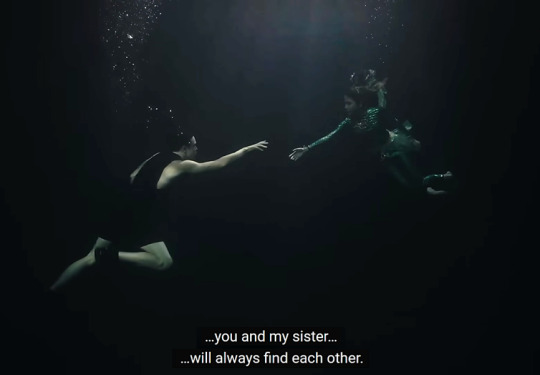
However, the special promo video (released 24 November 2023) also tells us (in Heng's interview linked here) that Chalothon and Wansarat were lovers in past lives, even while it is Phaya and Wansarat (reincarnated as Tharn) who are paired by fate in The Sign.
And as the nagas and garudas are bitter enemies, the love story between Phaya and Tharn/Wansarat that transcends time and reincarnation cycles is also one that must have been (and will continue to be) forbidden by their respective naga and garuda tribes (especially since Tharn/Wansarat also used to be naga Chalothon's lover), and will undoubtedly be a source of conflict in the series. This is way beyond the Montagues and Capulets! 😍
So with this as the base, I took a look at the characters' names, and those belonging to Phaya, Chalothon, Tharn and Wansarat especially also reflect their garuda/naga origins. 🤩
Phaya's name (พญา) means lord, king or leader. While it can be applied to the nagas (พญานาค/phaya naak refers to the King of the Nagas) it is also used for Garuda (the Thai national symbol) – พญาครุฑ/phaya khroot, or Lord Garuda (and is what his name references in The Sign).

(above) Billy Patchanon as Phaya
Chalothon's name (ชโลทร) is rare, but it is derived from Pali/Sanskrit and means river, sea or body of water, reflecting the watery homeland of his naga persona.

(above) Heng Asavarid as Chalothon
Tharn's name (ธาร) also has a connection to his water-dwelling naga roots. Tharn/ธาร is short for ลำธาร/lam thaan and means stream, brook or creek (and he is thus a naga nong to Chalothon's phi).

(above) Babe Tanatat as Tharn/Wansa
However, Tharn is his chue len. His formal name is Wansa, and is the same Wansa in Wansarat (which the narrative lets us know at Ep.1 [3/4] 9.35).
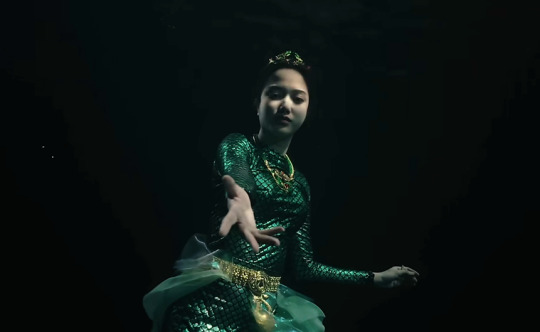
(above) Freen Sarocha as Wansarat
Now Wansarat is spelt วรรณษารัตน์ in the subtitles (at Ep.1 [3/4] 9.02), and I can't find any translation of it that makes sense in the context of The Sign's world-building.
But Wansarat's name is spelt differently elsewhere on the Internet (on Thai drama websites, and movie databases, etc. like thaimovie.org), and I assume they've all based it on official releases from Idol Factory because the spelling is consistent across these other sources – it's วรรษารัตน์ there.
And Wansa/Wansarat spelt this way also reflects the nagas' dominion over water, because วรรษา/wansa (an archaic word, referenced in an older dictionary but not newer ones) means rain or rainy season (from the Sanskrit varsha) – in Thailand the nagas are also associated with rain control, and prayers are offered to them for timely and abundant rainfall when it is needed. (The -rat part of Wansarat is a feminine ending meaning jewel or gemstone, and may echo with meaning for speakers of Indian and Sri Lankan languages, since it's derived from the Pali/Sanskrit ratna).
Just out of interest (because nobody asked 😂) some of these naga/garuda elements were also present in the early episodes of KinnPorsche – the den of the Theerapanyakuls (nagas, wealthy beings of the underworld) was full of watery elements (e.g., the waterfall, the various pools, and Tankhun's carp – which in Chinese belief are the original, natal form of dragons). The -nak in Kinn's formal first name Anakin (which is not a traditional Thai name) is also a nod at the word naga. Porsche had the tattoo of a fiery phoenix on his back, and was out of his element whenever water was concerned (e.g., his failed pool challenge, the mermaid costume punishment, his misadventure with the sprinkler when he tried to smoke in the store room – water vanquishing the flame). Kinn was unable to make fire when they were trapped in the forest, despite claiming to be friends with the flame, while Porsche could immediately do it.
But I didn't see the KinnPorsche narrative taking the naga/garuda themes much further than these random nods in the earlier episodes. Maybe it did (like Kinn and Porsche could be seen acclimatizing to each other's realms more), but I just couldn't be bothered to look at the show more closely since it didn't really stand up to deeper scrutiny, and after the first few episodes I just went along for the exhilaration of the ride instead. 👍
Anyway, I'm totally bedazzled by the level of world-building going on in The Sign and look forward to more from the series. If the first episode is anything to go by, I think Executive Producer Saint Suppapong may be on to something! 😍
#the sign#the sign the series#mythology#naga#garuda#naga and garuda#thai mythology#thai bl#phayatharn
565 notes
·
View notes
Text
Fantastic Creatures in Himmapan
Part One
2022 calendar project by David Ryo
Styled by Hongsawadee

Nang Ngeuk - the mermaid
Found in stories like Phra Aphai Mani and the Ramakien.
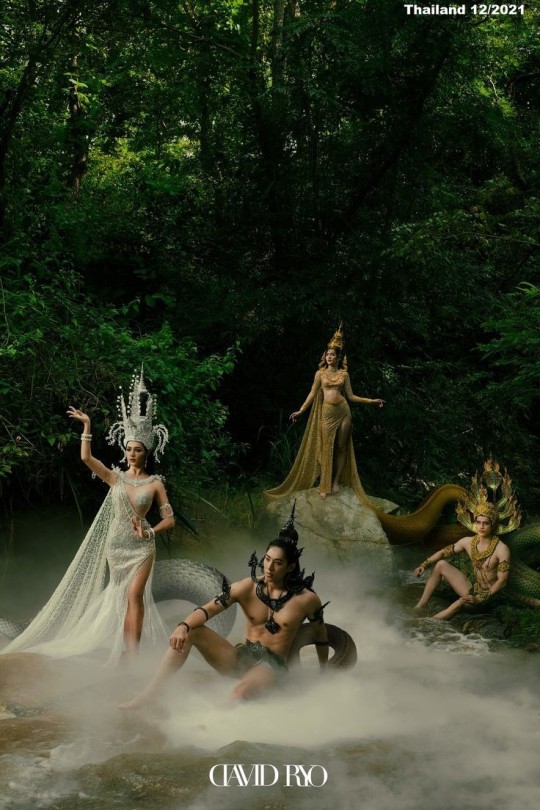
Naga
There are four Naga families, represented by different colours: Green, Black, Rainbow and Golden.
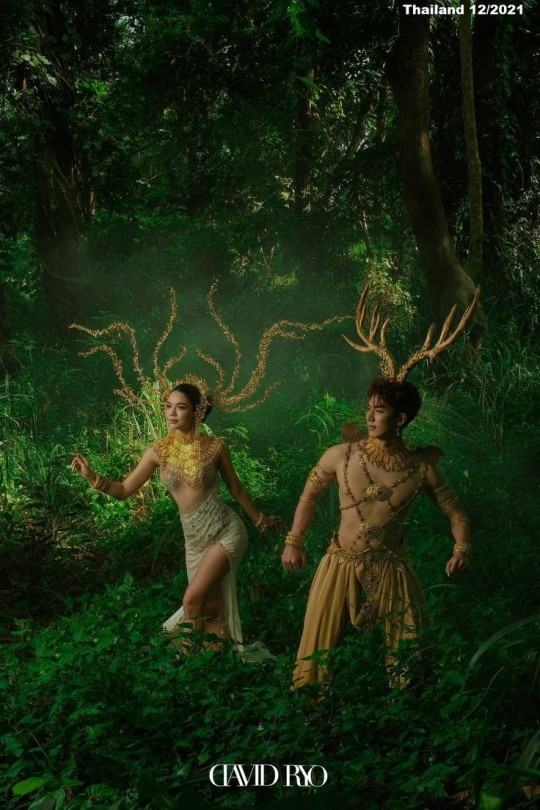
Upsorn Srihas
half-human half-deer creatures said to live in Himmapan forest.
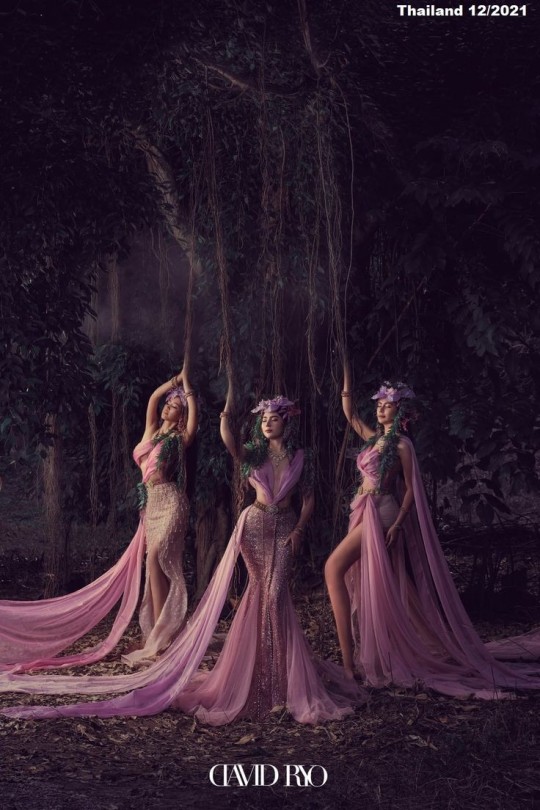
Makalee Pons
strange female beings, born from the fruit of magical trees only found in Himmapan forest.
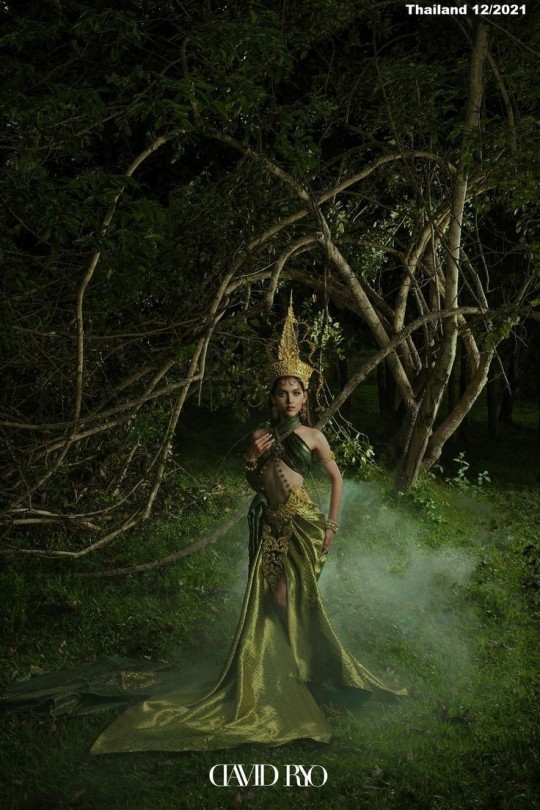
Nang Tani / Thai nymphs
Born within a tree, these spirits can follow their trees if they are chopped down.
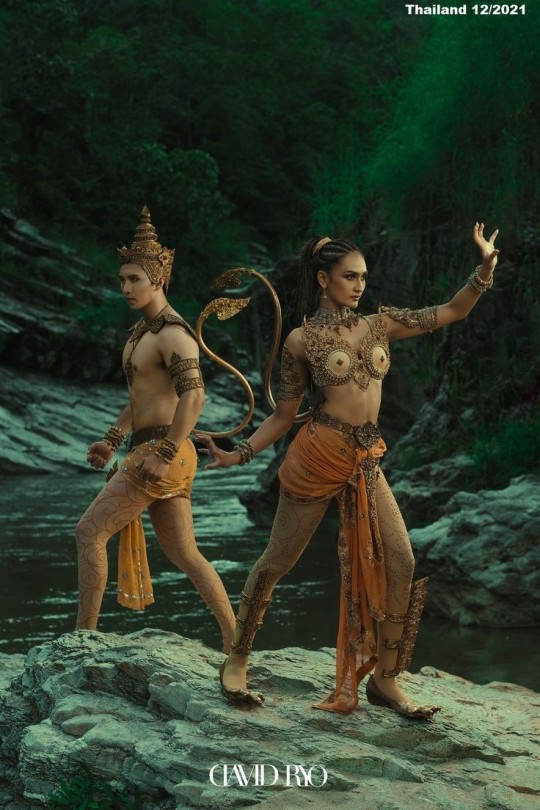
Thep Norasri
A lion-like hybrid creature, often compared to the sphinx. The upper body is human and the lower a lion although sometimes the legs are more deer-like but with a lion's tail.
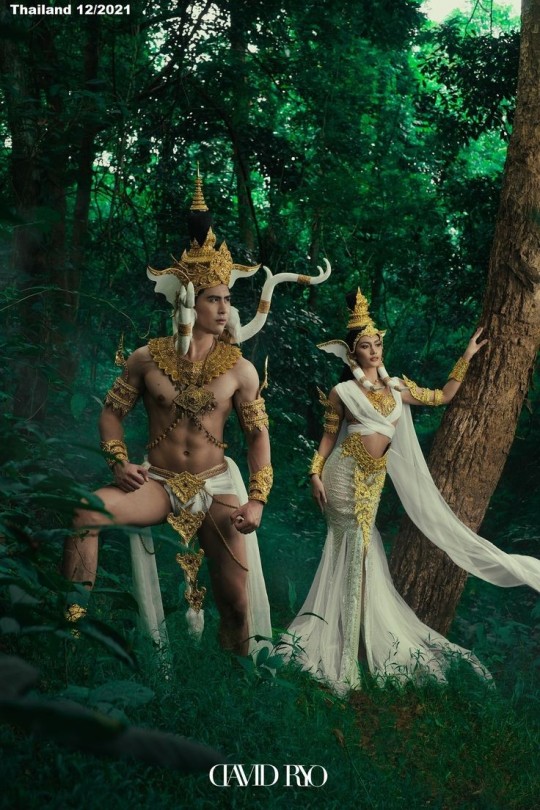
Chattathahatti
A mystical animal that looks like an elephant but is silvery white and can move incredibly fast.
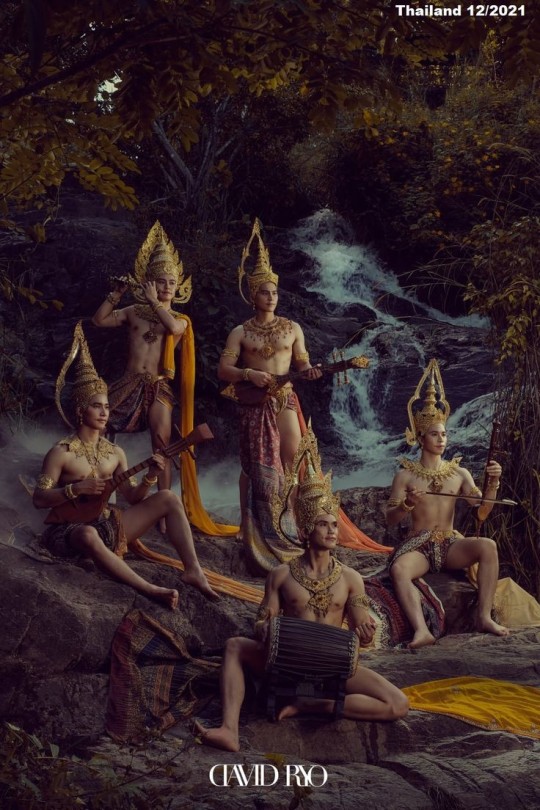
Khon Tun
Magical beings that live between the human world and the heavenly realm. Very fond of music.
258 notes
·
View notes
Text

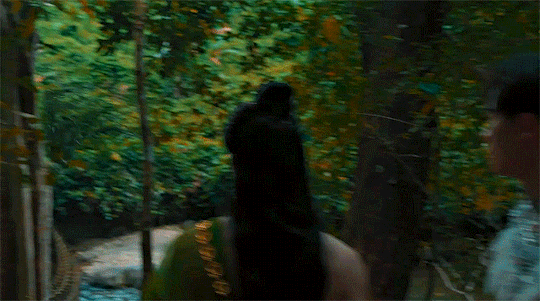




Myth and Magic in The Sign the Series ep 6
339 notes
·
View notes
Text
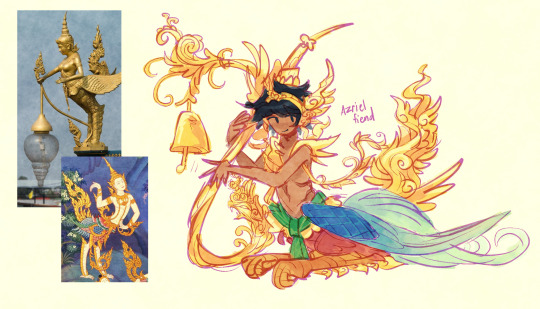
a quick drawing of my sona as a kinnara... as a treat... theyre half bird half human detities that can fly between worlds, and is associated with music and love! theres a lot of statues of them in the grand palace which is so cool to me
#my art#thai#thai culture#thai mythology#kinnara#kinnari#mythical creatures#my cfs is not letting me have it help i have to sleep#this drawing doesnt have all of the details of the kinnara ofc i stylized it and simplfied it#but it was so fun drawing all of the details and patterns
43 notes
·
View notes
Text
NAGA GARUDA WORLD
The Sign the series




Thanks for the cleaver scheme/explanation @tar_sa888 on Twitter
#the sign the series#naga x garuda#tharn x phaya#thai mythology#thai series#thai actors#thai bl action fantasy
70 notes
·
View notes
Text

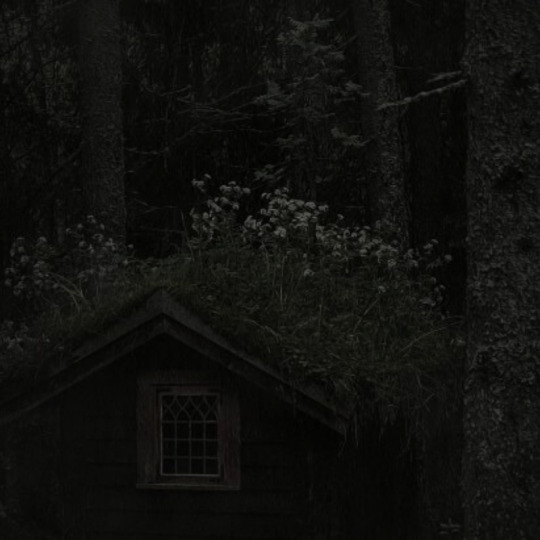


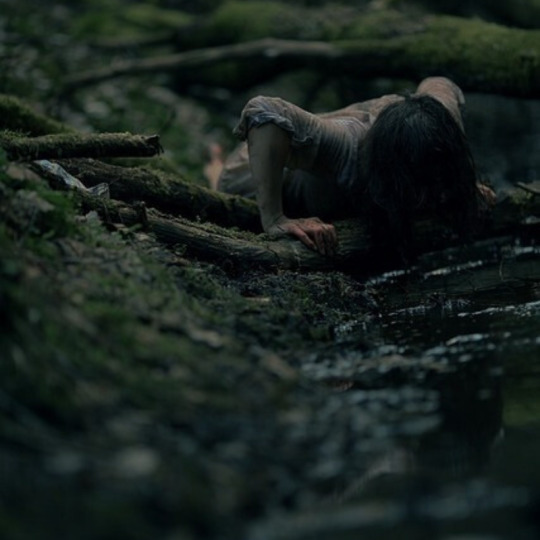


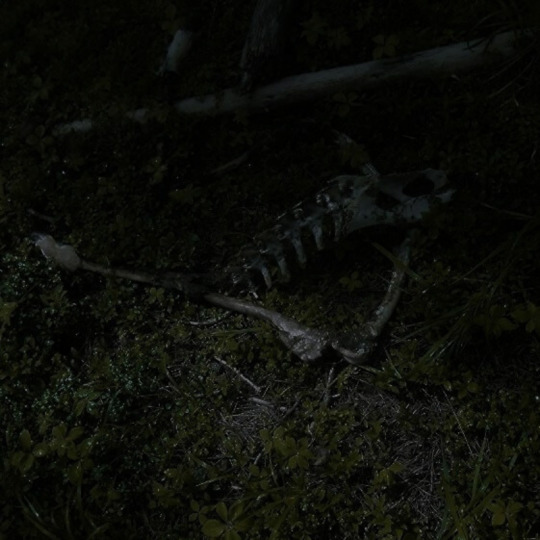

day 13 of horror mythology: phi lang kluang
it is said that phi lang kluang has a very large wound on his back. inside the hollow back there are intestines full of worms. according to legends, phi lang kluang enjoys jokes and pranks. for example, they ask someone to scratch their back. when someone does this, the phi lang kluang turns out to be such a creature with a hollow back and full of creeping centipedes. phi lang kluang are said to live in forest communities.
139 notes
·
View notes
Text
The plan was to start watching The Sign by divvying up the series into two episodes per day until I could finish. Well…that plan went completely out the window and I ended up binge watching the entire thing in one go. So, as I try to gather my thoughts, I wanted to sort of get my feelings out there on what I thought was an incredible show before I finally unfilter the tags (as to avoid any outside influence on my opinion).
Let me preface this by saying that this is going to be an incredibly bias opinion given my cultural upbringing and background (I'm half-Thai and I've spent almost half of my life living in Thailand), so please take that into account before reading any further. I metaphorically removed my western-lensed glasses while watching this series and preferred to watch as a Thai viewer, which probably made the more confusing or difficult parts of the show a lot easier to swallow. So, yes, I will admit that the show was not perfect by any means, but I was able to overlook a lot of its shortcomings given the parts that had been done so well and what this series could mean for Thai QL media going forward.
My goddess, where do I even start…
I'm a sucker for the reincarnated/fated lovers trope, so the show had me before it even started. What I absolutely loved the most about the romance and the A+ chemistry was that it didn't dominate or singularly drive the story, which was refreshing to see. It gave room to explore the fantasy/mythological elements of the show, the investigatory plotlines (which we'll get to later), and the relationships of the characters surrounding the "main leads".
Episode 3, my beloved, was what solidified my trust in this series and served as the foundation for the personalized experience I curated in my continued viewing. First off (and a bit of a side note), seeing Yoshi show up as Sand just made my heart super happy. I've been following her off and on since 2018, and she was one of the only things I actually liked about หมอ มือ ใหม่… but I digress. Behind the main story (and maybe even because of it), this episode was, for all intents and purposes, a love letter to Thai culture and its religious mythology. Which, when you consider how much international draw a BL series can hold, is truly momentous. International viewers got to experience the Bang Fai Phayanak (the naga fireball festival) that occurs every Wan Ok Phansa (the last day of what is considered Buddhist Lent) and the significance it holds over Thai history and culture. Using this as the stepping stone to establish the importance of the series' reliance on naga folklore…brilliant! The episode was also the viewers' introduction to the Buddhist idea of the cyclical intermingling of karmic fates. How the implications of an interdependence on one fate more than the others would later define the relationship between Phaya, Tharn, and Chalothorn…genius! All of this!? In one episode…of a BL!? I was overwhelmed by a sense of cultural gratitude and pride, that I still can't quite shake. I think Saint knew exactly what he was doing when he chose to adapt this series and I love him even more for it.
Aside from the cultural dependency and relevance, the show delivered so much beyond that as well. The production quality sailed high above previous BL standards and, in turn, lent itself to beautiful visuals and cinematography.
The casting! Billy and Babe's chemistry was just so *chef's kiss*. I knew Billy would absolutely smash it in the role of Phaya, but I often forgot that this was Babe's first ever acting role. It was an undertaking, that you could tell, he did not take lightly. Heng!? Wow! What a performance! He's been a staple in every Idol Factory series thus far, but he really nailed the purely villainous role of Chalothorn. Gap as Yai? No notes. He was able to flesh out what could have been a very one-dimensional character. Tack and Poom as Khem and Thongtai were a welcome levity inbetween, what was otherwise, a more weighty plot.
If I had to address any gripes I had with the series, there were only two that really stood out:
1) I wish the moments/conversations between Tharn and Chalothorn that eventually led to Tharn's return hadn't happened off-screen. There was a lot left to be resolved that could have been explored in that instance. But using my own inference based on Tharn as a character, his relationship with Chalothorn, and the core of his personality, I could kind of piece together how that ending came to be.
2)The lesser intriguing elements of the investigation storylines were shaky, at best. (If you were looking for the show to have a firm western-influenced ACAB agenda, then I'm sorry to say you were setting yourself up for disappointment. As much as I selfishly wanted it to be, this series was never going to be that show, it's a Thai drama.) From a Thai perspective, it made sense that the "copaganda" aspect of the series focused on the incompetency and inefficiency of a police force where justice is often informed by wealth and greed. I got an idea of what the show's stance on the matter was supposed to be but the overall plot and its consistency got lost somewhere within the final execution.
Other than that, I was left feeling satisfyingly content with where the series landed and I will continue to highly recommend it. It's easily one on my top five favorite Thai BL dramas and just Thai dramas in general! And…
There is such a rich history of mythology and folklore left for the show to still sink its teeth into: the garuda of it all, the pre-existing feud between the naga and garuda and why that is… Aside from a few minor specificities that were missing from naga folklore (their exclusion didn't really detract from anything, but it could have served to benefit non-Thai viewers), all of that could be addressed in a second season. Which, at this point, seems pretty likely 🤞🏾🤞🏾🤞🏾 and would be HUGE in the BL world.
PLEASE, LET IT HAPPEN! 🙏🏾🙏🏾🙏🏾
#the sign#the sign the series#thai culture#thai mythology#thai bl#i've had a very productive unproductive 12 hrs#i need sleep#i need to catch up on work#i formally apologize to my followers who are about to be flooded with 'the sign' content#i'm excited to finally get to see all the fan creations and gifs#😊😊😊#koda watches bl
50 notes
·
View notes
Text

Character design: Manimekhala and Ramasura , lightning and thunder.
Manimekhala and Ramasura are originated from Hindu-Buddhist mythology. They appear in various Southeast Asian literature although often take a minor role.
In Thailand, most well-known version of their story is : Manimekhala (or Mekhala for short) was an angel who watch over the ocean and save people from shipwreck. She often carried her favorite treasure, a shiny crystal orb, wherever she went.
One day while Mekhala was playing with the orb, she came across a giant name Ramasura. Ramasura was quite a bully, he wanted the treasure and decided to take it by force. Mekhala didn’t respond in fear, she even taunted the giant. So a chase game had started.
Ramasura was strong ,but whenever he tried to reach Mekhala or threw his axe at her, Mekhala would make the orb flash, blinded the giant with bright light so he always missed the target.
They said bright light from Mekhala’s orb is a lightning, and sound of Ramasura throwing his axe is a thunder.
77 notes
·
View notes
Text
anyone wanna join Tangled Fates taglist do engage with this post! :) I'm uploading the new chapters soon so you will be added to it!
Tangled Fates
A Phaya x Tharn fic about their past life as Sapuna and Wansarut.
Tangled Fates Part 2
What happened after Sapuna left for Garud Lok, and how Wansarut faces a challenge to decide her future.
Tangled Fates Part 3
Coming soon :)
You can also suggest tropes or submit requests regarding this :)
#the sign the series#fic#the sign bl#bl drama#bl series#thai bl#thai drama#phaya x tharn#phayatharn#au fanfiction#thai series#asianlgbtqdramas#bl fanfic#happypopcornprincess writes#forbidden romance#thai bl series#billybabe#sapunawansarut#mythology au#thai mythology#fantasy au#new fanfic#bl fanfics#bl fanfiction
29 notes
·
View notes
Text
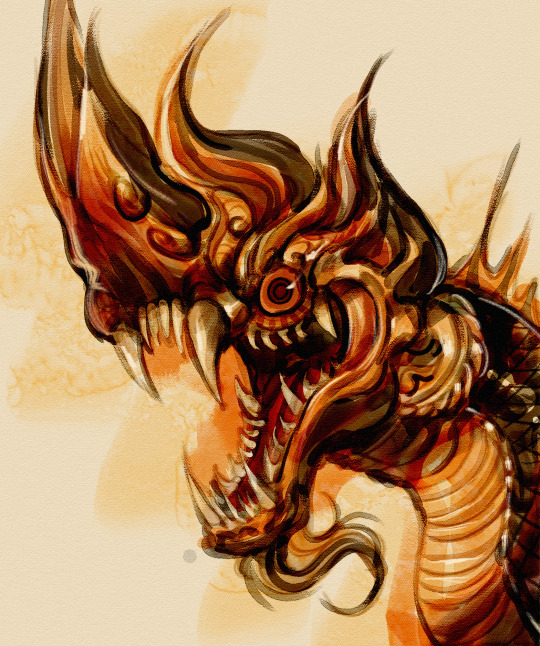
Phaya Naga
Testing an effect I'd be needing for scales.
132 notes
·
View notes
Text


Happy Songkrant day in 2024!
Hi and happy Sonkrant day or Thai traditional new year in 2024. Today, I will tell about Songkrant day or Thai traditional new year, or as known as water festival in Thailand. And I will mention to how different about Holi festival or Color festival in India, let's be enjoy it!
In every year of Songkran festival, in Thai myth that said, "The after Thamabhal Kumara (Thai: ธรรมบาลกุมาร) won Lord Kabilbhrama (Thai: ท้าวกบิลพรหม) by gave an answer his question, Lord Kabilbhrama told to his all 7 of daughters that 'If I did behead myself, you have to carry my head on tray and walk in loop parade on Meru Mountain (Thai: เขาพระสุเมรุ) in 7 times and take my head back to heaven.' When he said, he did behead his head and all 7 daughters do follow his order. They will do it in each of year by angels who are called, "Miss Songkrant (Thai: นางสงกรานต์)", they are daughters of Lord Kabilbhrama and angels of days in week." (You can read full Songkrant's story on this post)
And in the year, Miss Songkrant of year is "Miss Mahothorn Devi (Thai: นางมโหธรเทวี)" She is daughter of Lord Kabilbhrama and she is which one of 7 angels of days, her day is Saturday. Her appear is wearing black spinel bracelet, and water hyacinth on beside her ear. She is holding chakram and trident, her vehicle is peacock. And her favorite food is hog deer.
For someone who confused about Songkrant festival in Thailand and Holi festival in India though Thailand got Songkran festival by Holi in India, but they are different in my opinions here:
Name and story. (You can read about both full stories on Holi post and Songkrant post)
"Holi" which word from name of "Holika" devil, she is younger sister of the demon who name is "Hiranyakashipu". He is her brother, and he is father of "Prahlada" who is his son. But she is dead by burn in bonfire that Hiranyakashipu lied to his son for killed him that it is worship to Lord Vishnu. And also, it is celebrating to love of Krishna and Radha too. But "Songkrant" which word from Sanskrit, it is meaning to "Moving." or "Passing." Thus, it is meaning “Moving of the sun on any one zodiac, it can any sign.” In Thailand, they did use it meaning as “The sun’s date when moving on Aries in only April.”. Songkrant's story said that Thamabhal Kumara who is son of rich family, he is a clever person, and he can speak with animal. One day, Lord Kabilbhrama asks him within 7 days, if he cannot reply to him, he will kill him by behead his head. But if he can reply to him, he will does behead by himself. But Thamabhal Kumara cannot give an answer for 6 days ago, finally, he lays down and heard answer form eagles are talking on top of palm. So, he can reply to Lord Kabilbhrama and he won him, Lord Kabilbhrama orders his daughters and does behead himself. His daughters carry his head with parade in every year.
Time to celebrating.
Songkrant festival has officially dates for celebrating on 13-15 April in every year, but in year, it has declared expand time to celebrating on 12-16 April. Because UNESCO announced that Songkrant festival in lists as Representative List of the Intangible Cultural Heritage of Humanity on 6 December in 2023. For Holi festival, I'm not sure when they will celebrate on date. Because I am usually see celebrating around in March. However, they are both get from Lunar calendar too.
How to do in the festival.
They are both Songkran festival as known as splash water and Holi is splashing color powder by herbs, but Songkrant, many people to do merit with monks in Buddhism Temple, stay with their family, take a bath Budda image by water or scented water in their house or accommodation, and splash water to other for fun. For Holi festival, before celebrating by splashing with color powder, they will do ritual is "Holika Dahan" by performing rituals in front of the bonfire for memorial Holika. It is significant winter is ending and spring is coming.
This is my opinions about Holi festival and Songkrant festival, however, you can find about them by yourself. If you are interesting.
And in the last, I wish to everyone to be happy and enjoying while stay safe too.
See y'all!
#my art#illustrations#art#illustration#phuaymee story#culture#thai mythology#hindu mythology#songkran
6 notes
·
View notes
Text
THE SIGN EPISODE 3 – NONG KHAI, NAGA FIREBALLS AND THE DANCE OF ADVERSARIES
Only watched Ep.3 last night and it was a trip in more ways than one; this is another one of those BLs where the hand of the Tourism Authority can be seen heavily pulling the strings, and in this episode it was plugging for Nong Khai – which is especially relevant to the naga mythology underlying The Sign.

The province of Nong Khai is far to the northeast of Thailand, separated from Laos by the mighty Mekong River; its capital city is also called Nong Khai.
Nong Khai is famous for a number of festivals, including the Rocket Festival and the Naga Fireball Festival. The Rocket Festival is referenced in the subtitles at Ep.3 [2/4] 14.41 but this is incorrect, because Tharn's grandmother mentions the date as "the 15th day of the 11th waxing moon" (the Rocket Festival takes place earlier in the year).
This date (a full moon night) is actually the Naga Fireball Festival, when the phenomenon of fireballs launched from the Mekong is supposedly at its peak. (There is as yet no formal scientific explanation for the fireballs, and locals believe they are spat out by the great naga or Phaya Naak who resides in the Mekong.)
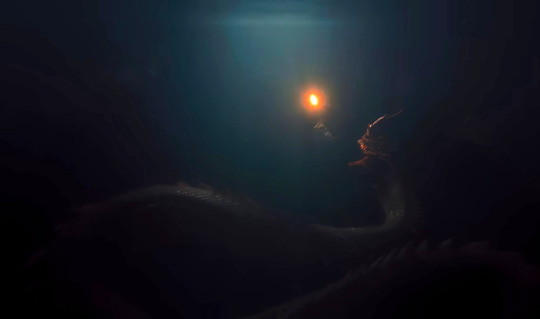
This is of course the same festival that Phaya, Tharn, Yai and Sand go to watch at Ep.3 [3/4] 2.18 .
And this date (วันออกพรรษา/wan ok phansa) is also the last day of the three-month Buddhist Rains Retreat (พรรษา/phansa, sometimes also called Buddhist Lent). The first day of Phansa (in the eighth month), marks the official start of the rainy season – Phansa is the Thai version of the Buddhist celebration known more generally as Vassa elsewhere, and the word is derived from the Sanskrit varsha (which means rain).
In The Sign this celebration of Phansa is significant because the word is a cognate with the วรรษา/wansa of Tharn's formal first name Wansa and the name of his previous female naga self Wansarat, which are both also derived from the Sanskrit varsha (see this link here for more elaboration). 👀
Anyway, this means that kid Phaya was actually drawn to the Naga Fireball Festival (not the Rocket Festival) and was presumably called into the Mekong by a naga. And he was saved from drowning by a reincarnated naga (Tharn) on the last day of the season that shares Tharn's name.
And thereafter, Phaya would always dream of Wansarat on the date of the Naga Fireball Festival (the 15th day of the waxing moon in the 11th month, also the last day of Phansa/Wansa).
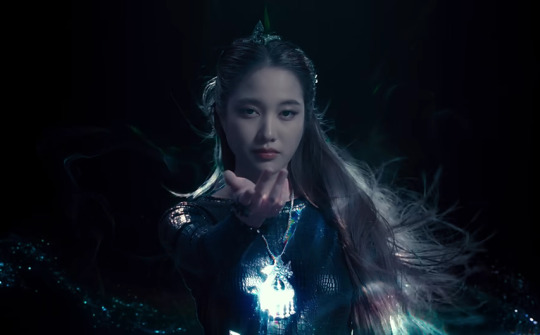
This is why his visit back to Nong Khai coincided with the festivities we see onscreen – he was there to investigate these links to the date and festival.
So far The Sign has been fairly faithful in its visual nods to the naga and garuda mythology that underpins the narrative. There's been a lot of blue and green (very marine colors) associated with nagas Tharn and Wansarat. And there are references to red and the element of fire calling out to garuda Phaya. This scene is an example:

In the scene above the red light on one side is contrasted with the blue-green one on the other, and mirrors the dance of the fiery garuda and the water-dwelling naga. Phaya has just been rescued from the Mekong by Tharn, and he is shivering in a blue-green t-shirt (which is the naga's color, not his).
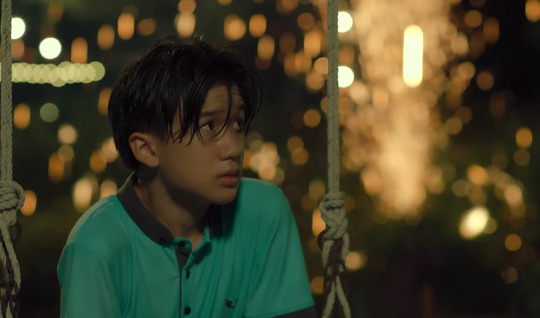
(above) Sparks erupt behind the garuda Phaya as he seeks to recover his life-force after his near-drowning; the light on his person (as he is facing naga Tharn) is of a cooler tint though

(above) Naga Tharn is also sopping wet but totally at ease; he is also bathed in warm tones as he faces the flaming presence of garuda Phaya
This scene after Phaya's near-drowning is also one of several where we see a swing (e.g., Ep.3 [2/4] 17.02, Ep.3 [2/4] 19.02, Ep.3 [3/4] 10.03 and Ep.3 [3/4] 11.07). I may be over-reaching here, but for Thai people this may be calling to mind the Giant Swing in front of Bangkok's Wat Suthat, which was once used in an annual Hindu Brahmin ceremony (now discontinued) that was held to mark the moment when the nagas of mythology abandoned their mountain stronghold on land (their coils maintaining stability) and moved instead to their permanent, watery homeland.
Noting that the nagas are shapeshifters, the green-eyed Wansarat enticing Phaya into the water is also likely to be a malevolent naga that has assumed Wansarat's form, seeking to drown Phaya (we've seen glowing green eyes before, on the naga that Phaya saw when he struggled with the Ep.1 water challenge, and also in the greenery of the garden at the bar/restaurant where the boys go to drink).
And in another nod at the naga/garuda conflict, when the abbot Luangpor lights two candles at Ep.3 [2/4] 28.36, the rumbling stormclouds outside (that are harbingers of rain) promptly extinguish the flames before speaking ominously with him.
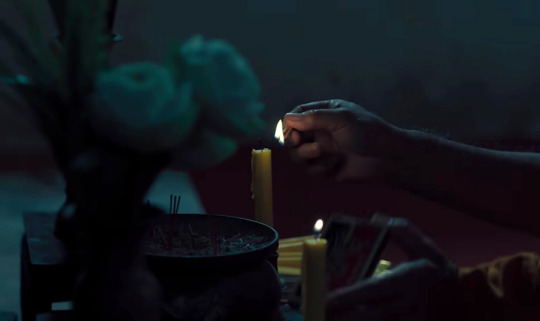
Nagas, because of their association with all things water, are also custodians and dispensers of rain in Thai mythology. Thus the voice that speaks to Luangpor from the clouds must be that of a vengeful naga, and he has underscored his displeasure with garuda Phaya by snuffing out the flames of the candle (fire being associated with garudas in The Sign).
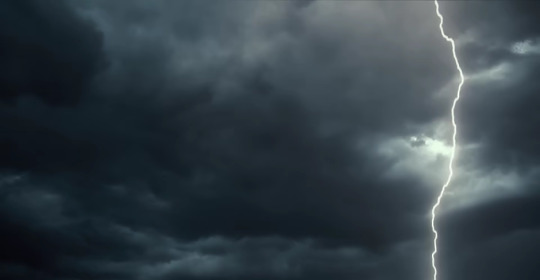
So one more little salute to the naga and garuda can possibly be read in the matching shirts that Phaya and Tharn don when they visit Wat Phra That Bung Puan at Ep.3 [3/4] 11.13:

The warm tones (garuda colors) of the matching shirts contrast with the blue-greens (naga colors) of their shorts/jeans. Meanwhile, the swirling graphics on their tops are likely a reference to the naga fireballs, which reminds us that even though the nagas and garudas are supposed to be at odds, the fireballs are one area of overlap with the flames of the garuda – a kinship also echoed by the matchy-matchy going on with the outfits here (and the premise that Tharn and Phaya are a forbidden but fated naga/garuda pairing). 😍
The culture of Nong Khai also explains why there is so much naga imagery in this episode – a lot of it is to do with the festival of the Mekong naga and its fireballs. But the garuda (Phaya's earlier incarnation) is still referenced in the visuals of Ep.3 – directly at Ep.3 [3/4] 15.08, but more indirectly elsewhere.
The many establishing shots of the temple finials called chofa (e.g., at Ep.3 [2/4] 8.19, Ep.3 [2/4] 19.53, Ep.3 [2/4] 23.10 and Ep.3 [3/4] 6.52) are actually a visual reference to the garuda:

This kind of chofa (with the curved profile reminiscent of a raptor's beak) is called the pak kruut or garuda tip chofa. There are several other kinds, including a naga finial, but the ones we see here in the establishing shots of the abbot's temple are of the garuda type and are a sly, less in-your-face wink at the garuda (at least compared to the abundance of naga imagery).
Anyway the trip ends with Tharn attempting to distance himself from Phaya because he doesn't want to jinx another of his loved ones (although what that means for Yai and Sand seemed a little rude for Tharn to suggest! 🤣).
True to his naga form a lonely Tharn seeks refuge in the watery realm – his condo pool:

But the flaming red swim briefs about his loins are in the color of the fiery garuda, and belie his divided loyalty.
So when Phaya goes to confront Tharn at the rooftop gym, the dance of the naga and garuda, historical enemies, goes into full swing. Unlike their other physical encounters down at sea level (e.g., the open water challenge of Ep.1 and the Mekong rescue) here garuda Phaya is up in the sky, as close to the sun as he can be, and here he's in his element.
And when the two tussle (as would be expected of a naga and garuda), of course it would be Phaya coming out on top. It's his realm, and his turn, after all:

The naga and garuda are ever-present in The Sign. I'm sure there will be more of this to come!
#the sign#the sign the series#nong khai#naga#garuda#thai mythology#the sign tharn#the sign phaya#babe tanatat#billy patchanon
174 notes
·
View notes
Text
Fantastic Creatures in Himmapan
Part Two - Bird Edition
2022 calendar project by David Ryo
Styled by Hongsawadee

Mayura Khon Tun
A peacock-Khon Tun hybrid

Gingala-To
A creature with the head of a human and the body of a bird.
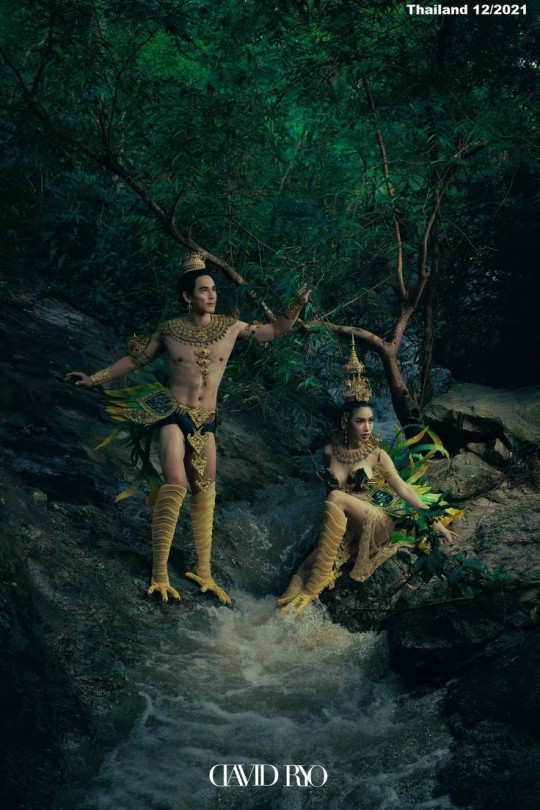
Thep Kinnaree
A beautiful half-woman half-swan creature famous for their lovely singing voices, dancing skills and graceful forms.
The male version is called Kinnara
There is a very famous Thai story/poem called Suthon-Manora which features a Kinnaree called Manora who has her wings stolen and is forced to marry a human.
The Manora story also influenced the southern Thai dance-drama style also known as Manora.

Garuda
King of the Birds, half man, half bird, he transports the God Vishnu around.
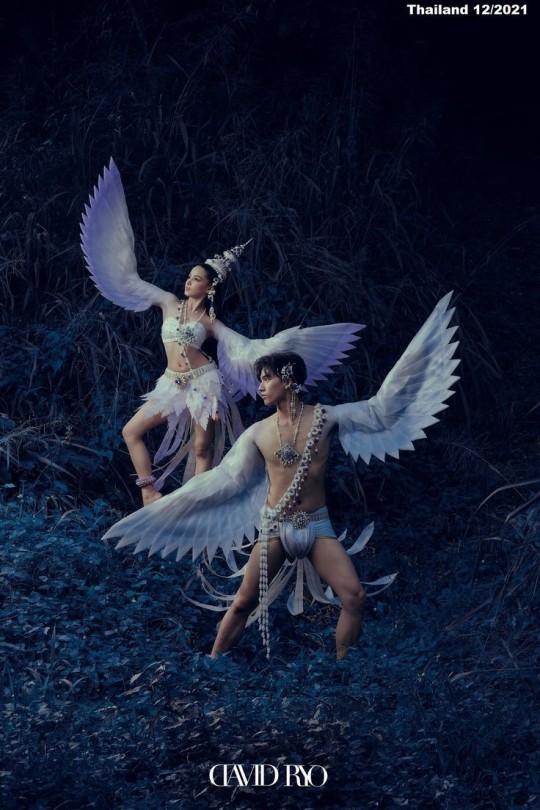
Arhan
This creature has a human head but the body and wings of a bird. It looks similar to a Kinnaree but is smaller.

Thep Puksee
Another human-bird hybrid. Very similar to the Kinnaree but they have human legs instead of bird feet.
110 notes
·
View notes
Text
Hate that when you google Nagini you land with Harry Potter
and when you google Nogitsune, you land with Teen Wolf -.-
13 notes
·
View notes
Text
Ritual weapon
I just saw this ritual trishula on Taiwan Facebook Marketplace. I don't know the exact purpose, but it has a cool design. It would make a great fantasy weapon. The trident reminds me of Thai depictions of Hanuman.

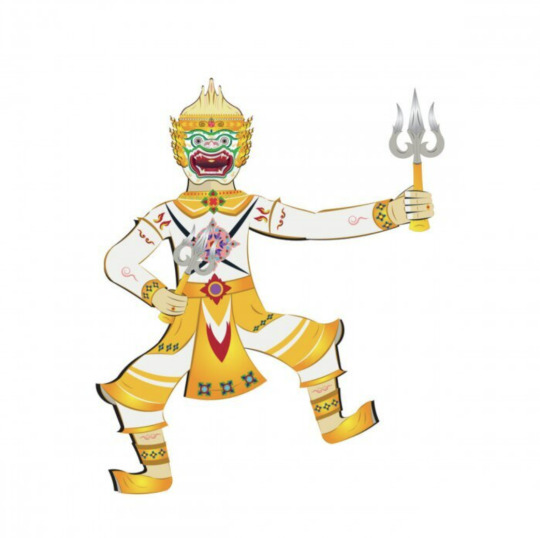
#fantasy weapons#weapons#trident#Hanuman#ritual weapon#Monkey King#Thai mythology#Sun Wukong#Journey to the West#JTTW#Lego Monkie Kid#LMK#MK#trishula
11 notes
·
View notes
Photo

The Nang Mai [Thai folklore]
Nang Mai, or ‘the lady of the woods’, is a female folklore spirit from Thailand, Laos and Cambodia. These spirits are said to haunt trees, hence their title as ladies of the woods. The most well-known Nang Mai is Nang Tani, or ‘lady of Tani’, she haunts banana trees. Normally invisible, she shows herself during a full moon, wearing a green outfit while doing so. She is portrayed as an attractive young woman with greenish skin, black hair and bright red lips. When she shows herself, she doesn’t touch the ground, instead hovering above it. Some people bring offerings to wild banana trees (usually incense, food and flowers) and it is considered a bad idea to cut down trees that are inhabited by Nang Tani.
This woody woman is generally seen as a benevolent spirit, offering food to passing monks. But she is also known to hurt men who have wronged women in their past (I found no decent sources for these last claims). Unfortunately, quality sources on Thai ghosts are hard to come by, despite the fact that ghosts and spirits still play an important role in Thai spirituality.
Sources:
Patamajorn, R., 2007, Spirit mediumship in Thailand: a performance theory approach, thesis submitted to the Institute for Ethnology of the University of Heidelberg.
http://www.thaiworldview.com/bouddha/animism5.htm
https://web.archive.org/web/20120915012401/http://ghostsofthailand.com/Thai_Ghost_Types.html
(archived)
(image source: Wikipedia user Xavier Romero-Frias)
61 notes
·
View notes